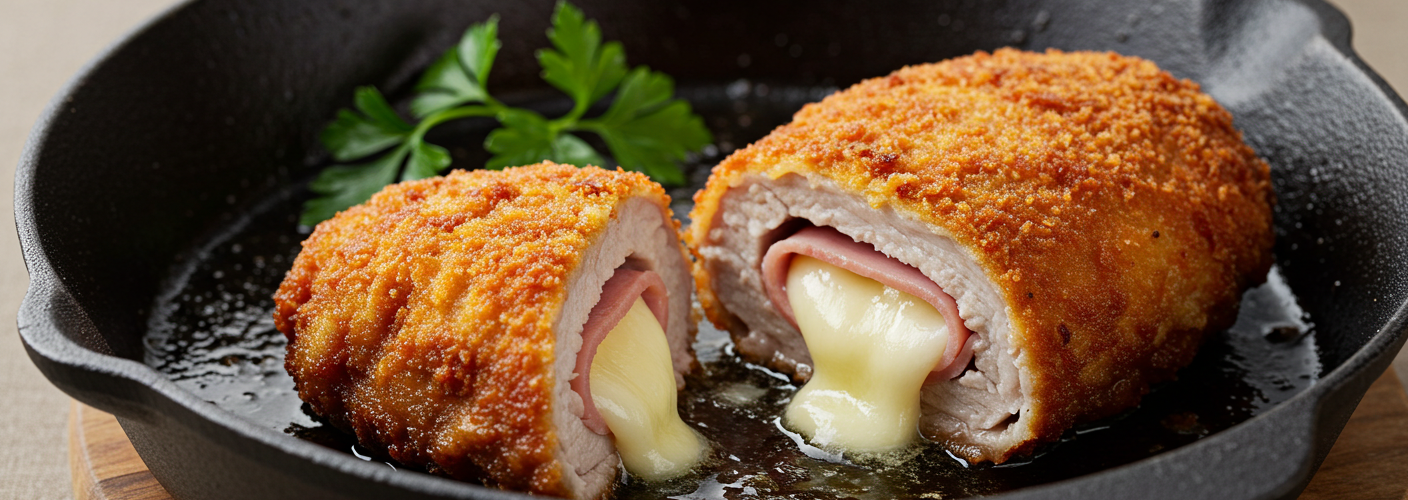When it comes to comfort food that combines decadence with simplicity, few dishes shine quite like Cordon Bleu. This iconic meal, characterized by its delightful layers of flavor and texture, has managed to secure a special place in the hearts—and stomachs—of food lovers around the world. For those seeking the perfect dish to impress guests or celebrate a special occasion, Cordon Bleu presents an unforgettable culinary experience.
So, what exactly is this mouthwatering marvel? At its core, Cordon Bleu involves thinly sliced meat, typically chicken or veal, wrapped around a savory filling of ham and melted cheese. The dish is then breaded and can be either pan-fried or baked to achieve a golden, crispy exterior. The result? A dish that not only tantalizes the taste buds but also offers a satisfying contrast between the tender meat, the salty richness of the ham, and the gooey goodness of the cheese.
The Foundations of Cordon Bleu
The origins of Cordon Bleu can be traced back to French cuisine, where it is known as “chicken Cordon Bleu.” Though it likely derives its name from the prestigious culinary school, Le Cordon Bleu, it has transformed over the years into variations found in various cultures. The classic preparation involves a few essential steps, starting with the choice of meat. Chicken breasts are commonly used due to their ability to remain moist and tender during cooking, but veal or even pork can serve as excellent alternatives.
Next comes the filling. Thin slices of ham—be it prosciutto, smoked, or simply a good-quality deli ham—are crucial for adding depth of flavor. The cheese is just as important; Swiss cheese is a traditional choice, but Gruyère, mozzarella, or cheddar can also work well depending on your flavor preference. The taste combination of the melt-in-your-mouth cheese and the savory ham provides a bedrock of satisfaction.
The Cooking Process
Preparing Cordon Bleu is relatively straightforward, making it a perfect choice for both novice cooks and seasoned chefs looking to whip up a delightful meal. Start by placing a slice of ham and a slice of cheese onto each piece of meat, then roll the meat tightly and secure it with toothpicks or kitchen twine. Dredge the rolls in flour, dip them in beaten egg, and finally coat them with breadcrumbs for that all-important crunch.
When it comes to cooking, you have two primary options. Pan-frying allows for a beautifully crispy exterior, while baking offers a healthier alternative that still retains the flavors beautifully. For frying, heat a generous amount of oil in a skillet and cook the rolls until golden brown on all sides. Baking, on the other hand, often involves placing the rolled meat in a preheated oven and letting it cook through, ensuring a tender inside.
The Final Touch
Once your Cordon Bleu is prepared, serve it with a side of vegetables, fries, or a fresh salad. For an additional burst of flavor, consider pairing it with a tangy dipping sauce or a light lemon butter sauce.
In summary, Cordon Bleu is more than just a dish; it is a celebration of culinary craft and flavor harmony. Whether you’re preparing it for a quiet family dinner or an extravagant gathering, the satisfying combination of crispy, cheesy, and savory will undoubtedly impress. So, gather your ingredients, and let this classic dish bring warmth and joy to your dining table.




Add comment